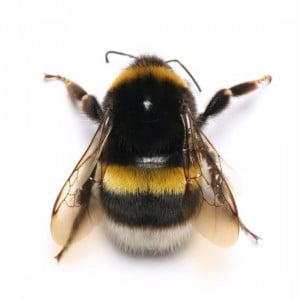Snake bite incidents are already occurring this season, and St John Ambulance (Qld) is recommending all parents familiarise themselves with the correct first aid treatment for treating snake bites.
Australia is home to 20 of the world’s most deadly 25 species of snakes. This staggering statistic means that you, your family, a neighbour or pet could encounter one of the world’s most poisonous snakes when you go on a bushwalk or even in your backyard.
St John Ambulance Queensland Regional Manager Leo McNamara said there were many myths involving first aid treatment for snake bites, and it was important for Queenslanders to know fact from fiction, and always follow the DRSABCD action plan (Danger, Response, Send for help, Airway, Breathing, CPR, and Defibrillation).
1. Do NOT wash the area of the bite.
2. Do NOT incise or cut the bite.
3. Apply a pressure bandage with immobilisation, then splint the bandaged limb.
Use the “pressure-immobilisation” technique recommended by the Australian Resuscitation Council – see their guidelines, or the Royal Australasian College of Surgeons and the Australian and New Zealand College of Anaesthetists.
The lymphatic system is responsible for the systemic spread of most venoms. This can be reduced by the application of a firm bandage (as firm as you would put on a sprained ankle) over a folded pad placed over the bitten area. Mark the site of the bite on the bandage and write down as much information as you can, such as the time of the bite, a description of the snake and when the bandage was applied. Immobility is best attained by application of a splint or sling, using a bandage or whatever to hand to absolutely minimise all limb movement, reassurance and immobilisation.
4. Where possible, bring transportation to the patient. Don’t allow the victim to walk or move their limbs. Walking should be prevented. Ensure the casualty is relaxed as much as possible; reassure them that everything will be ok – this will slow down the time it takes for the venom to go through the body.
Leo said common symptoms of a snake bite victim included a headache, nausea, drooping eyelids, drowsiness and problems speaking.
“Always call triple zero ‘000’ for an ambulance,” Leo said.
Snake bite – the Australian statistics
- Approximately 3,000 cases of snake bite each year
- Approximately 500 require treatment with anti-venom and hospitalisation
2-3 deaths per year - Over the last 25 years the death rate has dramatically decreased due to improved first aid treatment, improved identification and treatment with anti-venom.
- About half the deaths are due to bites from the brown snake; the rest mostly from tiger snake, taipan and death adder. While some deaths occur soon after the bite, it is uncommon to die within four hours of a snake bite.
Signs and symptoms of snakebite
Signs of snakebite are not always visible and symptoms may only start to appear an hour or more after the person has been bitten.
Symptoms that can develop in the first hour or more
Nausea, vomiting and diarrhoea
Headache
Double or blurred vision
Drooping eyelids
Bleeding from the bite site
Breathing difficulties
Drowsiness, giddiness or fainting
Problems speaking or swallowing voice change
Pain or tightness in the chest throat or abdomen
Respiratory weakness or arrest
Dark urine
Symptoms that can develop up to 3 hours after the bite
Limb paralysis
Hypoxia
Cyanosis
Decrease in the level of consciousness
Snake bite management
DRSABCD (Danger, Response, Send for help, Airway, Breathing, CPR and Defibrillation)
Rest and reassure the casualty
Pressure immobilisation bandage
Seek medical aid urgently
Do not
Wash venom off skin
Cut the bitten area
Try and suck venom out
Use tourniquet
Attempt to catch snake
Allow casualty to walk
These first aid tips are not a substitute for first aid training. St John Ambulance (Qld) offers a range of first aid courses including CPR, Provide First Aid, Resuscitation and Workplace First Aid throughout Queensland.
For more information visit www.stjohnqld.com.au or call 1300 ST JOHN (78 5646).
Do you have many snakes in your local area?
Share your comments below
Read more:
- Parents urged to check their kids from head to toe
- You would NEVER expect to find this in your child’s drink bottle!
- Snake found in childcare centre cot






















8:43 pm
9:01 pm
10:05 pm
9:15 pm
2:02 pm
11:42 am
-

-
-
mom93821 replied
- 12 Oct 2017 , 6:41 am
Reply11:24 am
6:23 am
4:23 am
10:38 pm
-

-
-
mom90758 replied
- 04 Oct 2017 , 2:34 pm
Reply10:24 pm
8:59 pm
8:00 pm
7:51 pm
7:38 pm
6:37 pm
3:59 pm
3:45 pm
2:56 pm
2:18 pm
- 1
- 2
- »
Post a commentTo post a review/comment please join us or login so we can allocate your points.